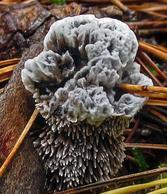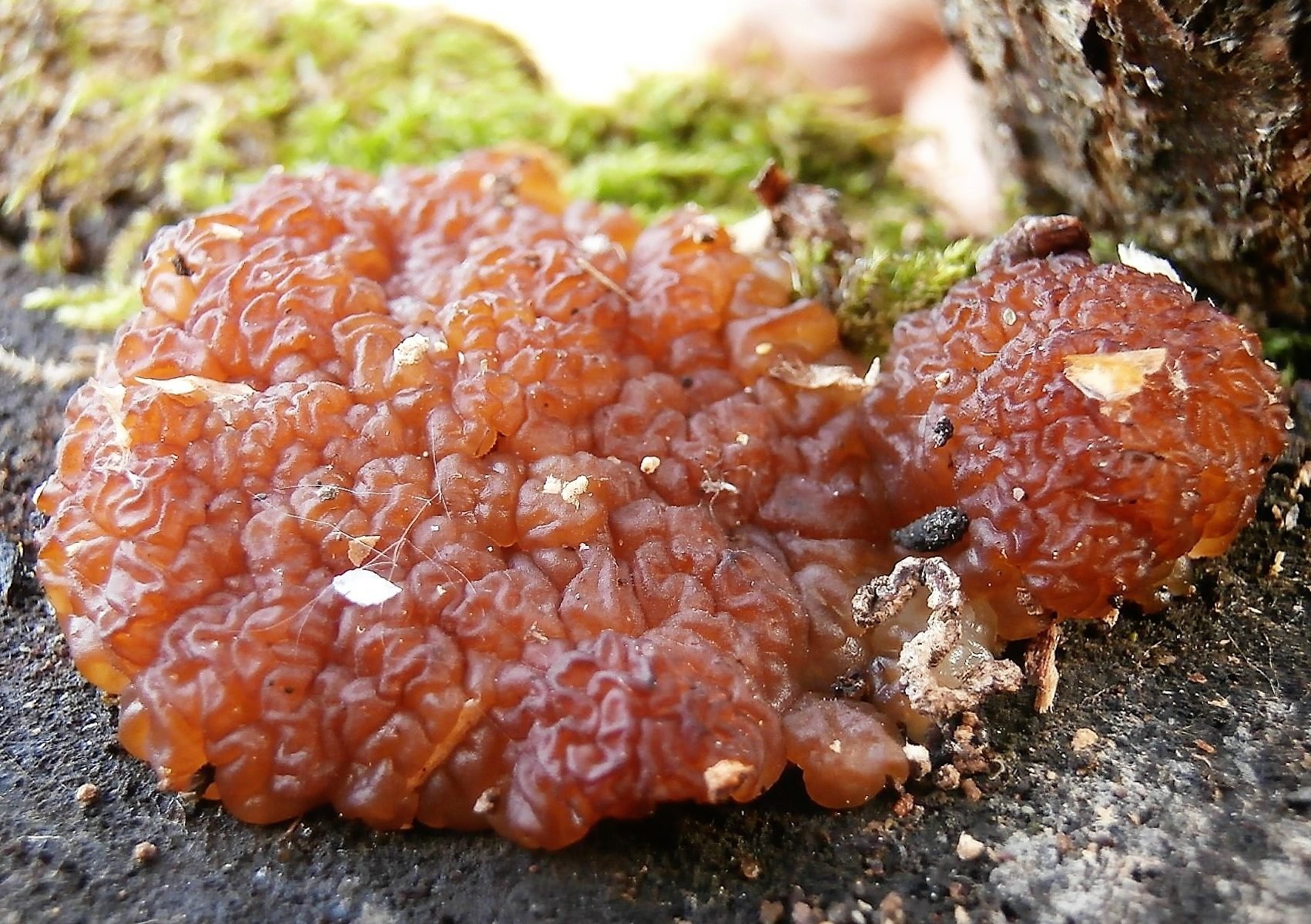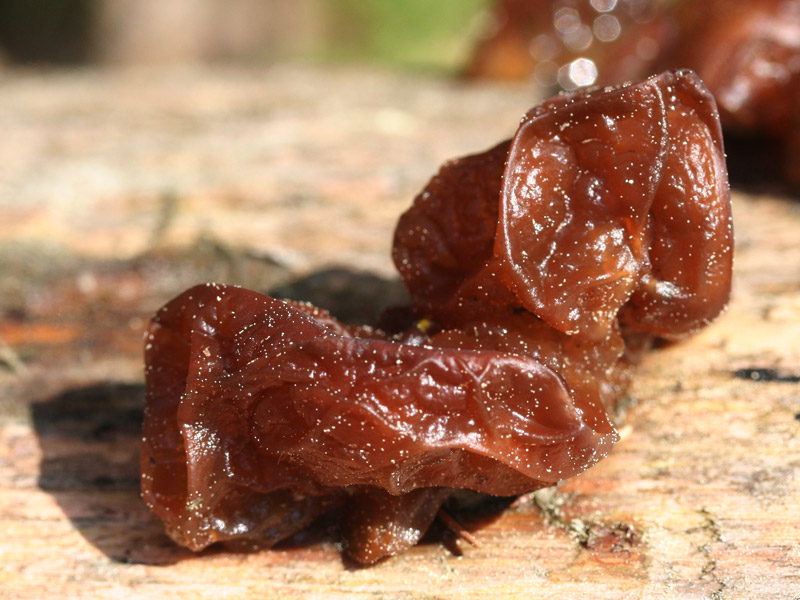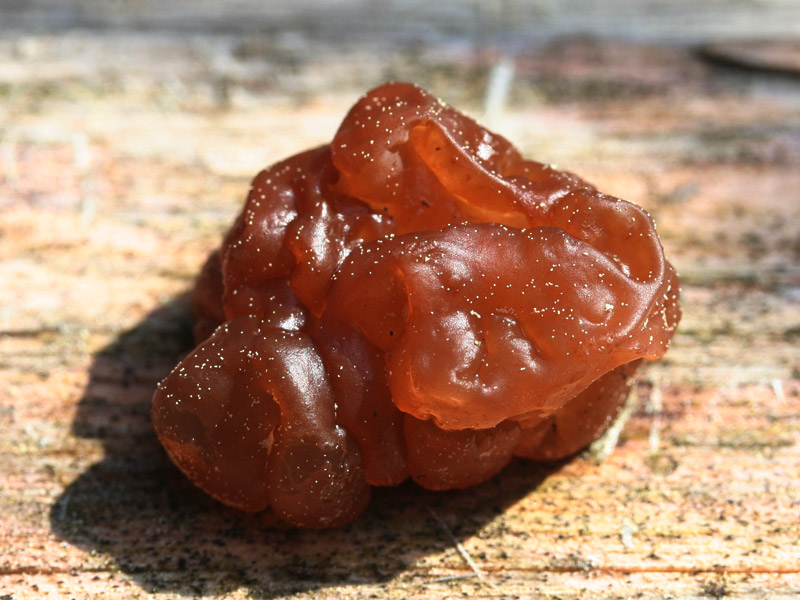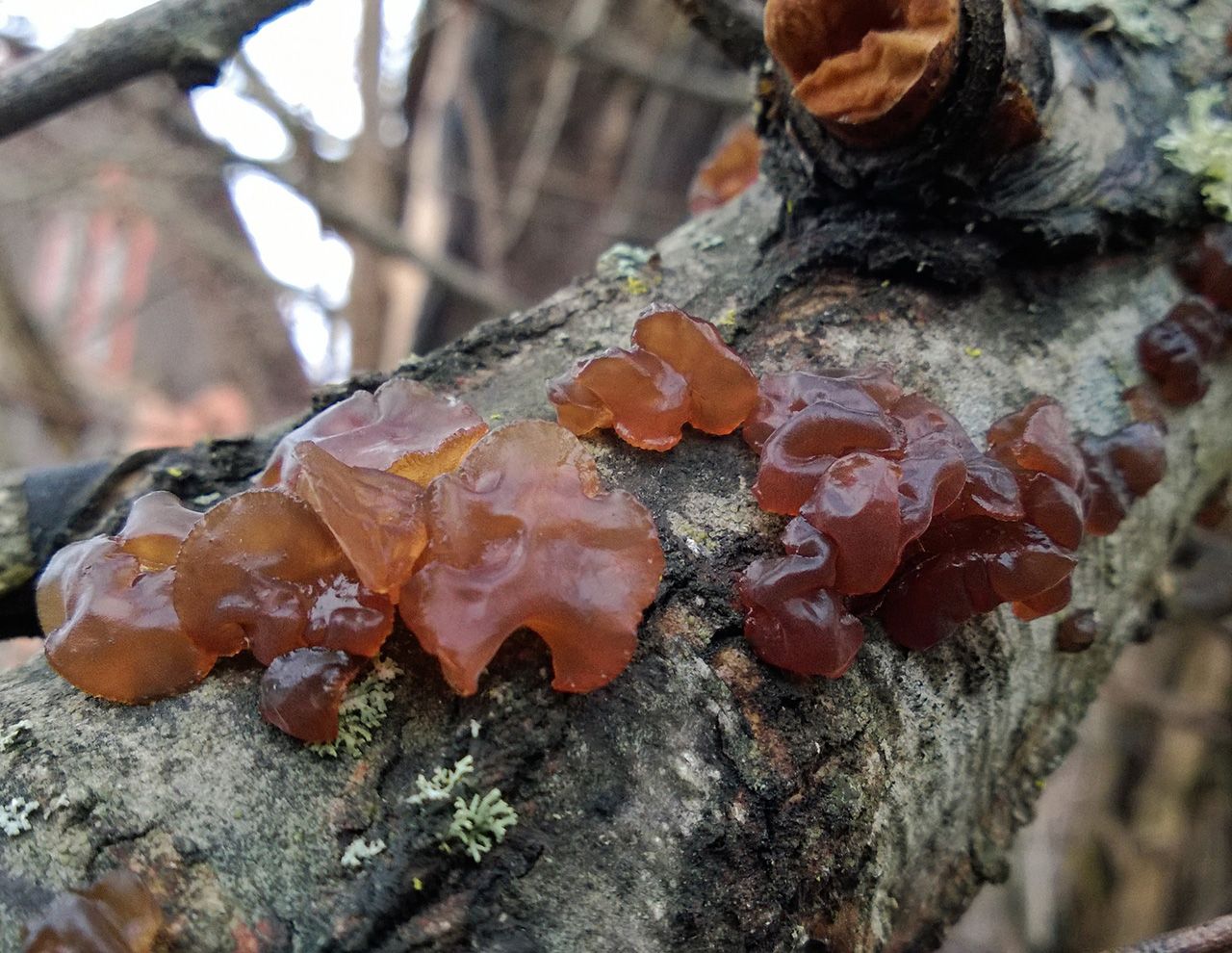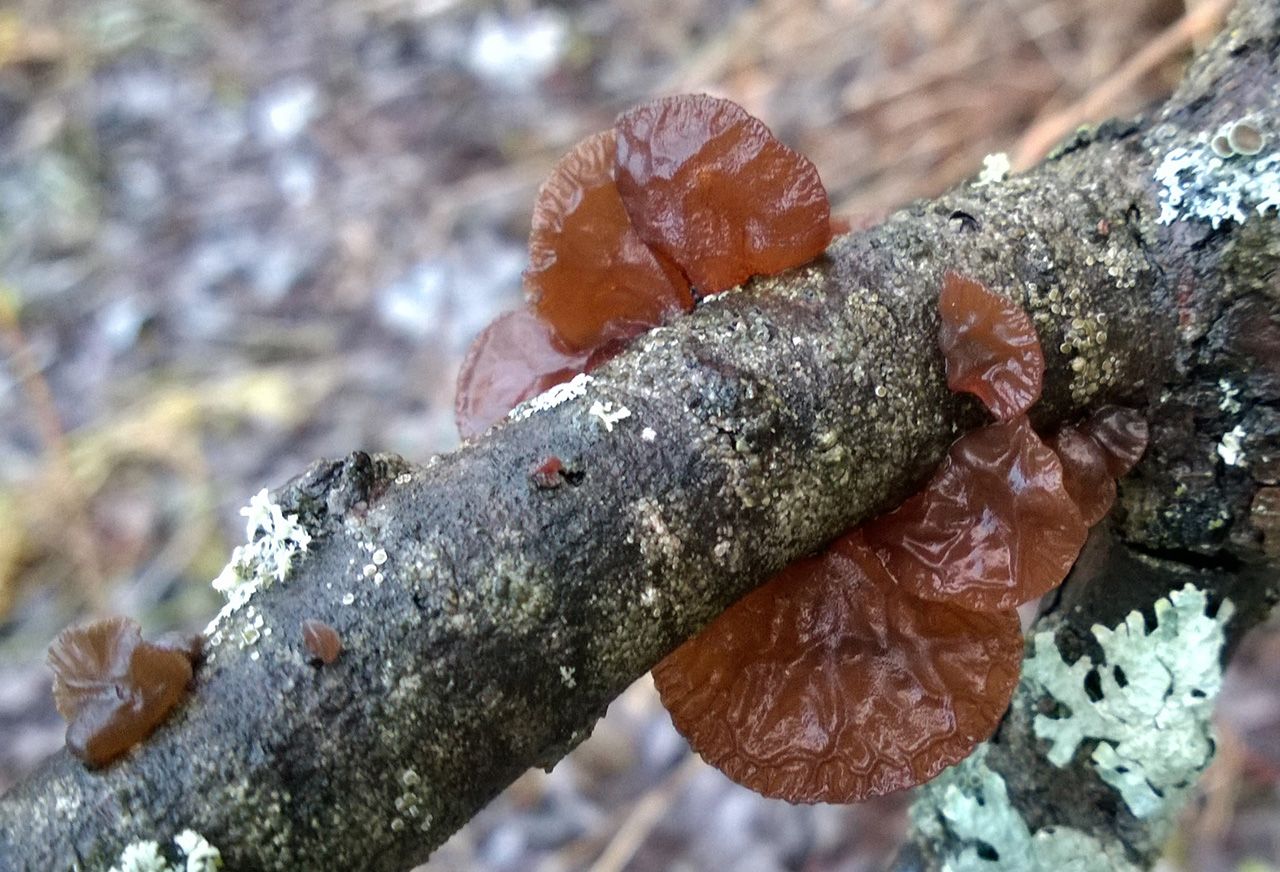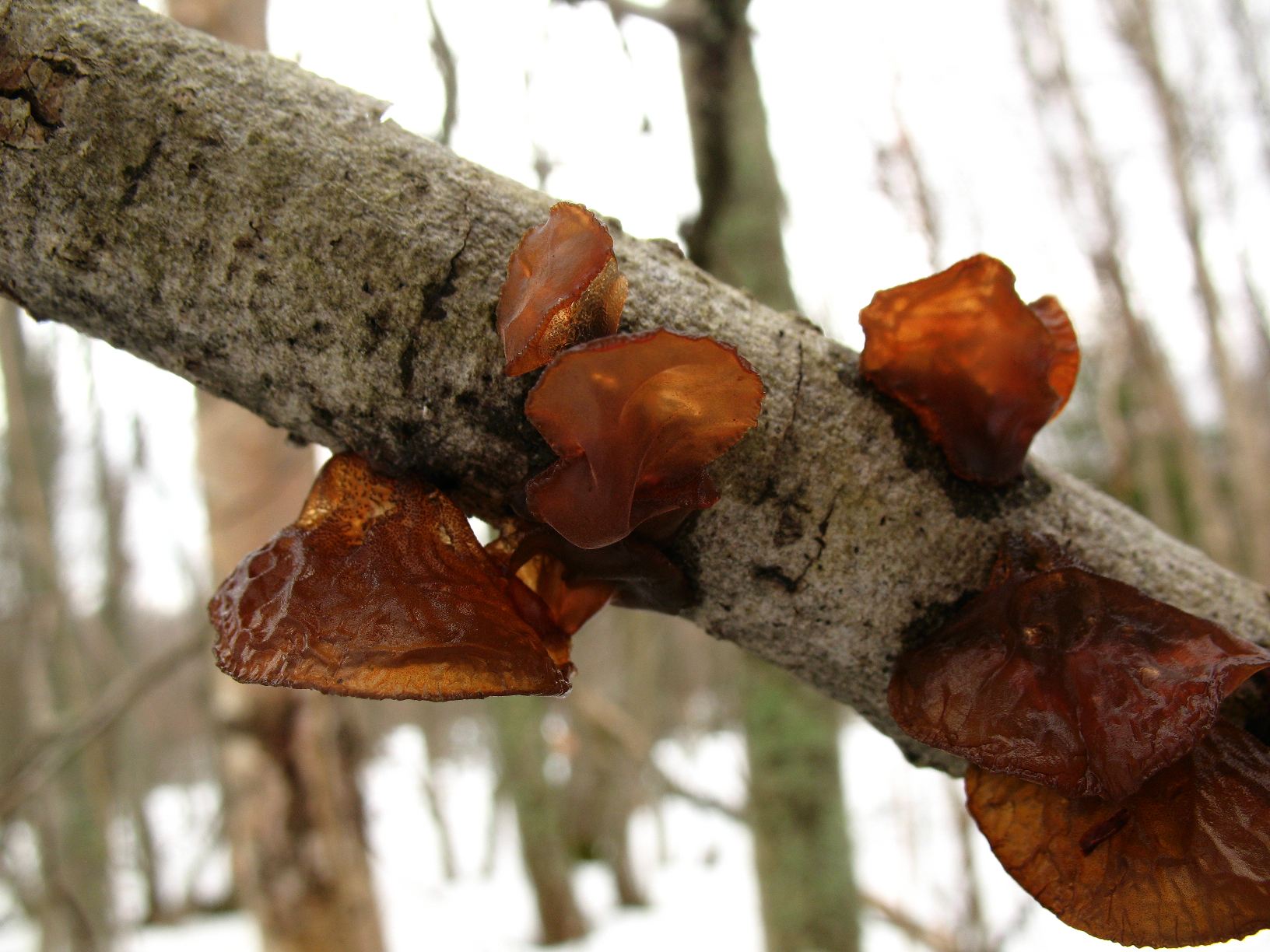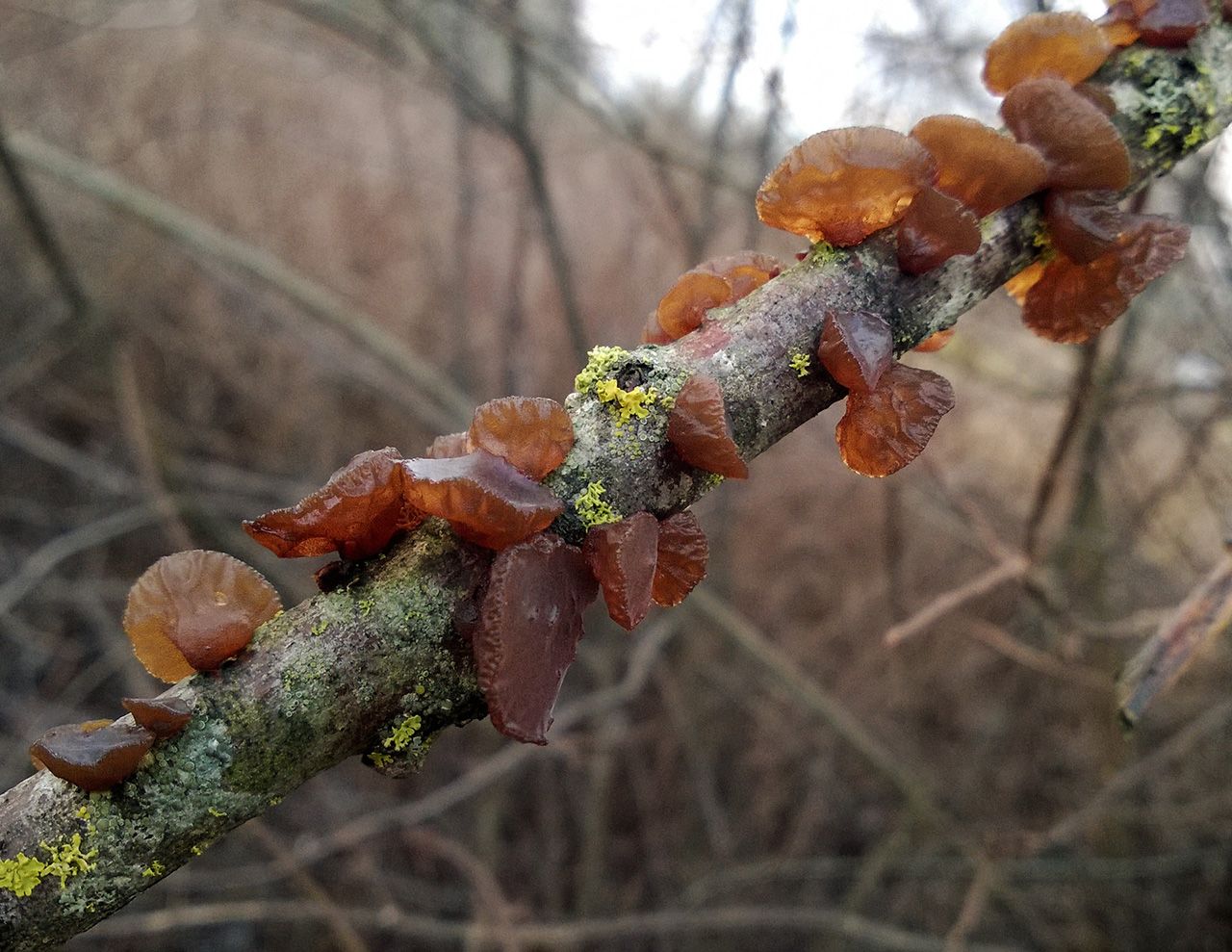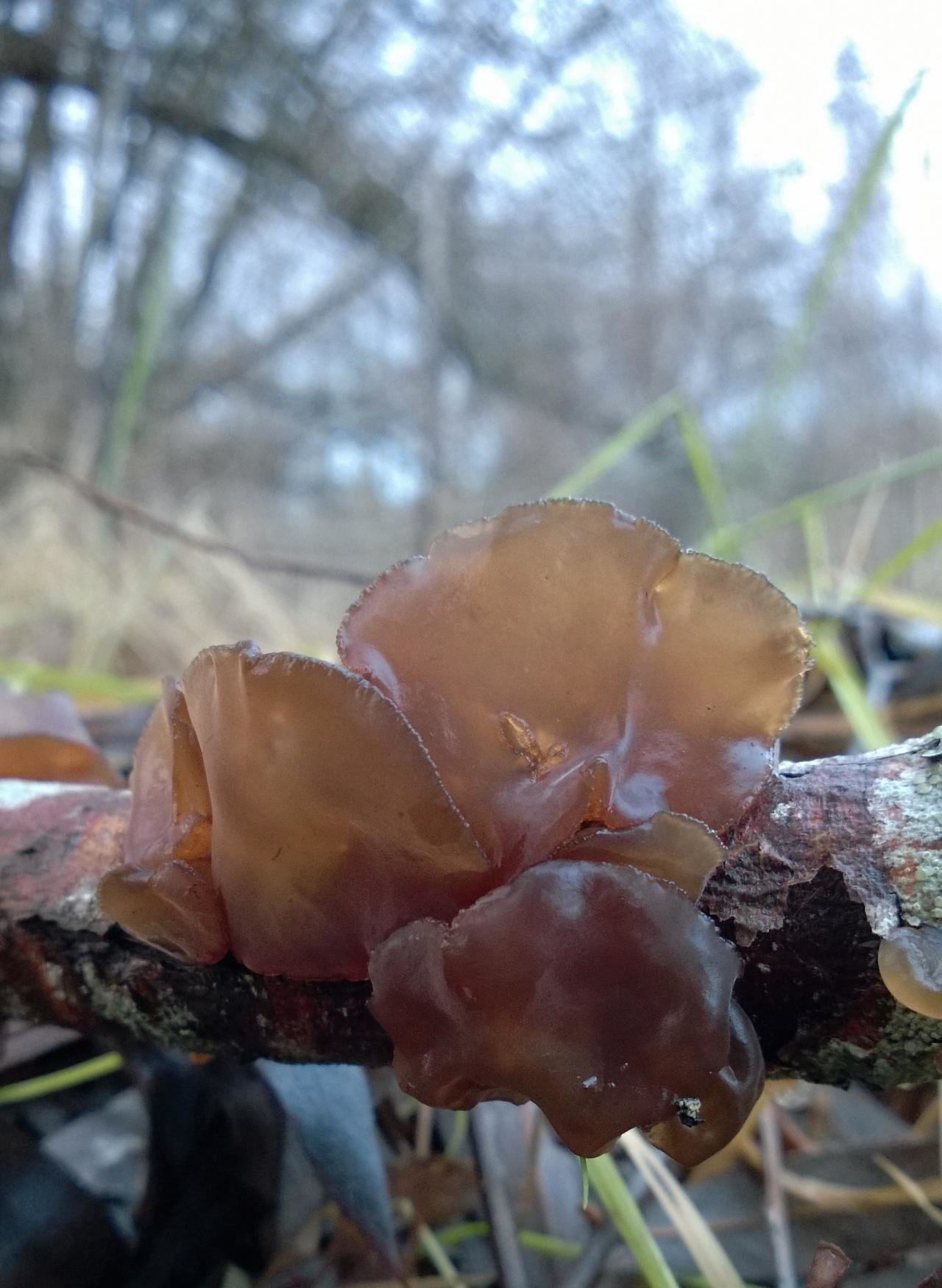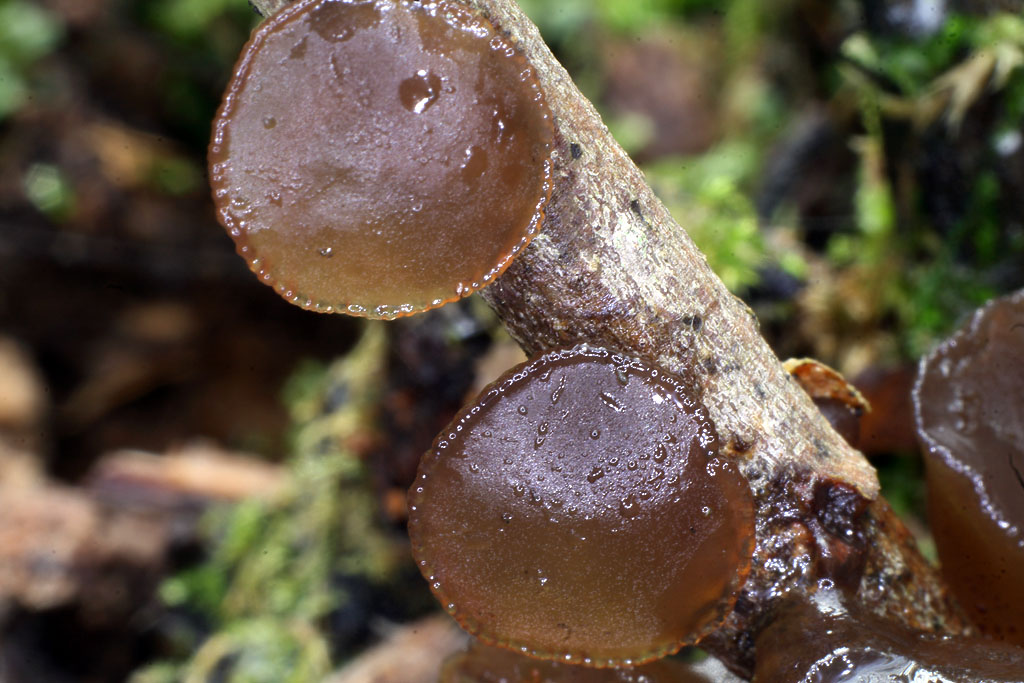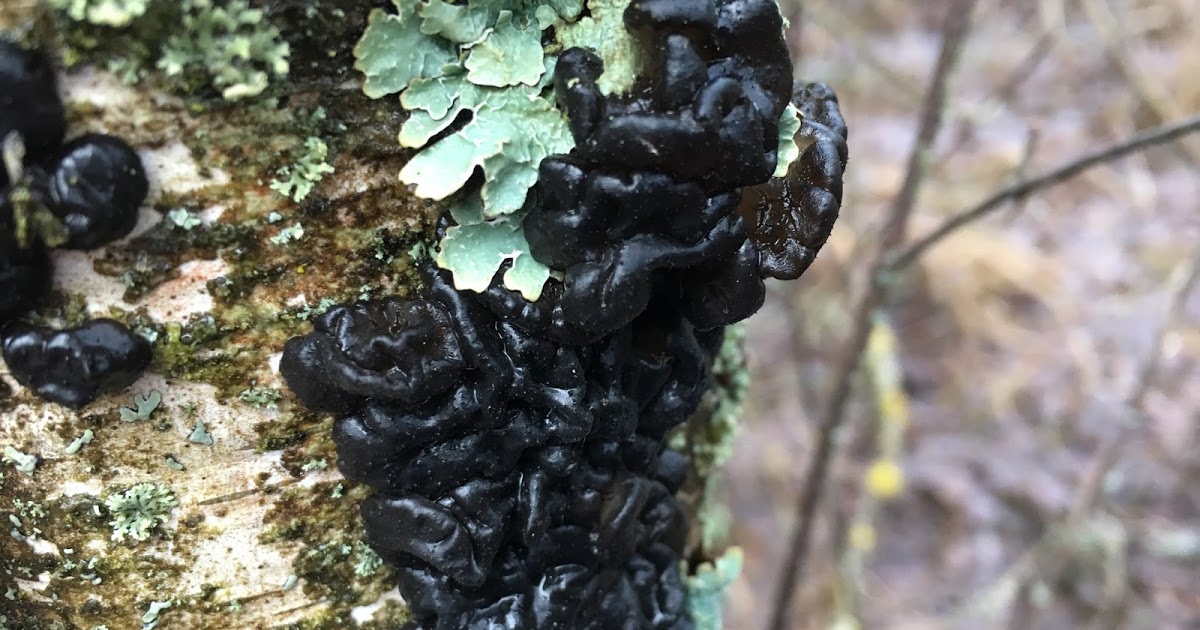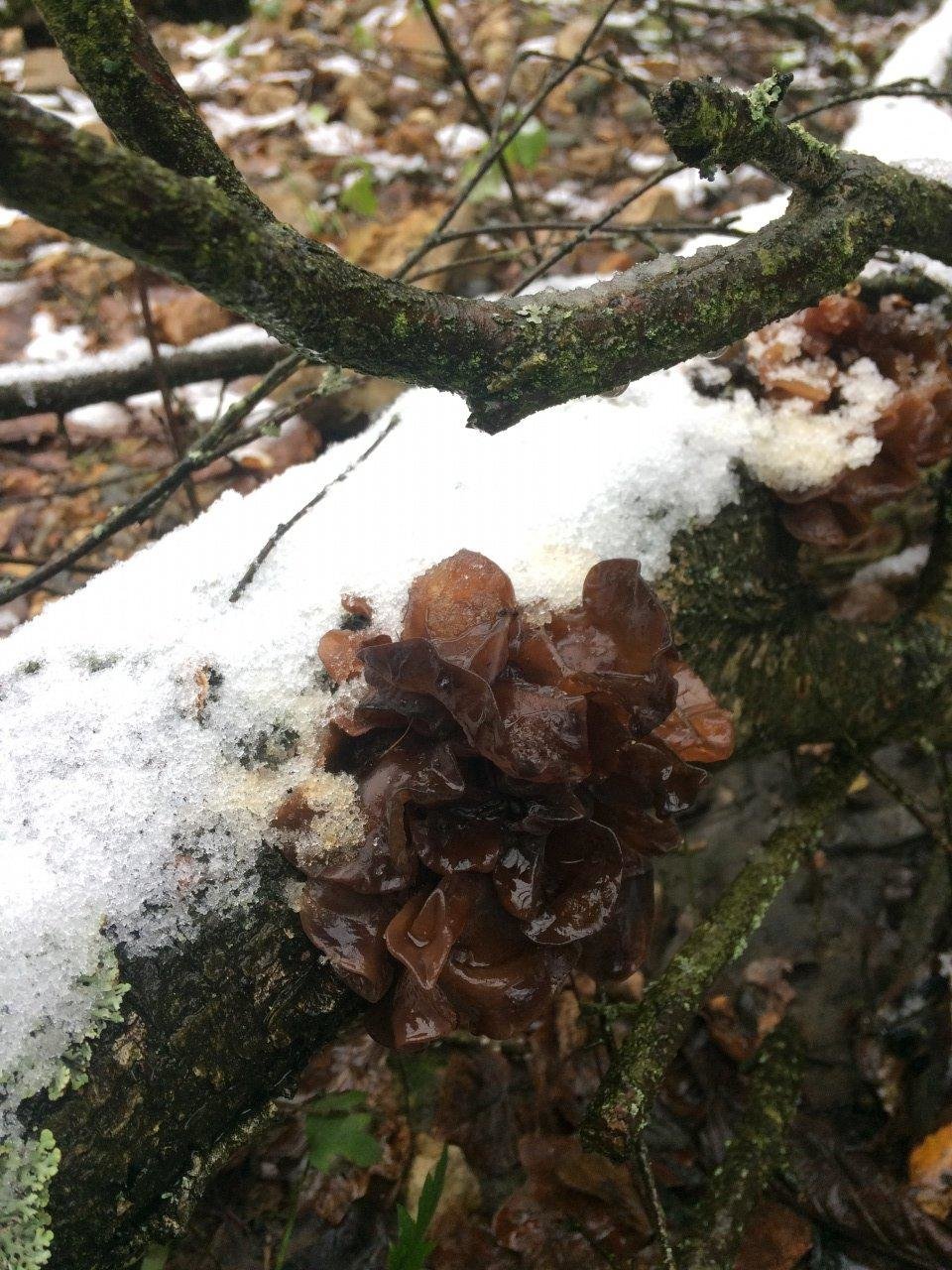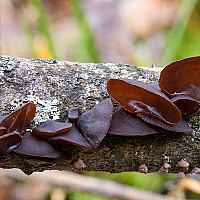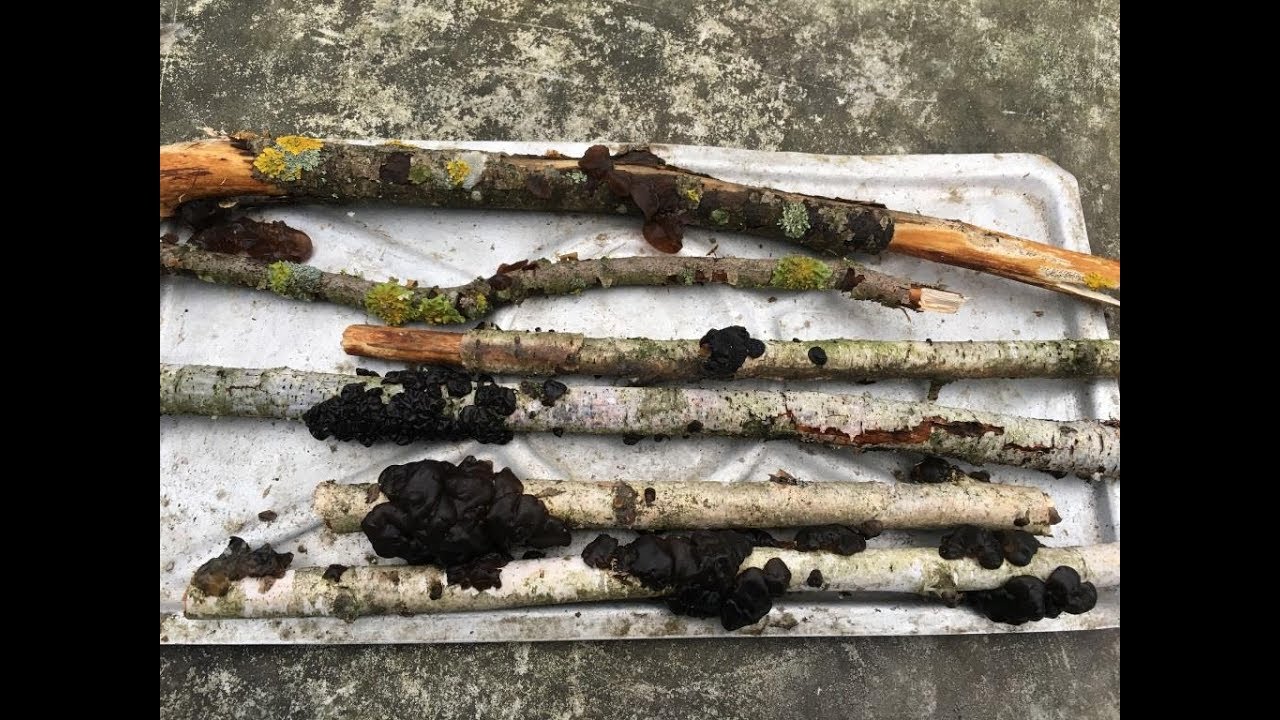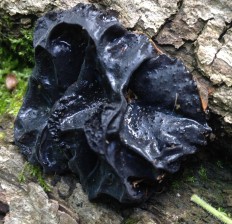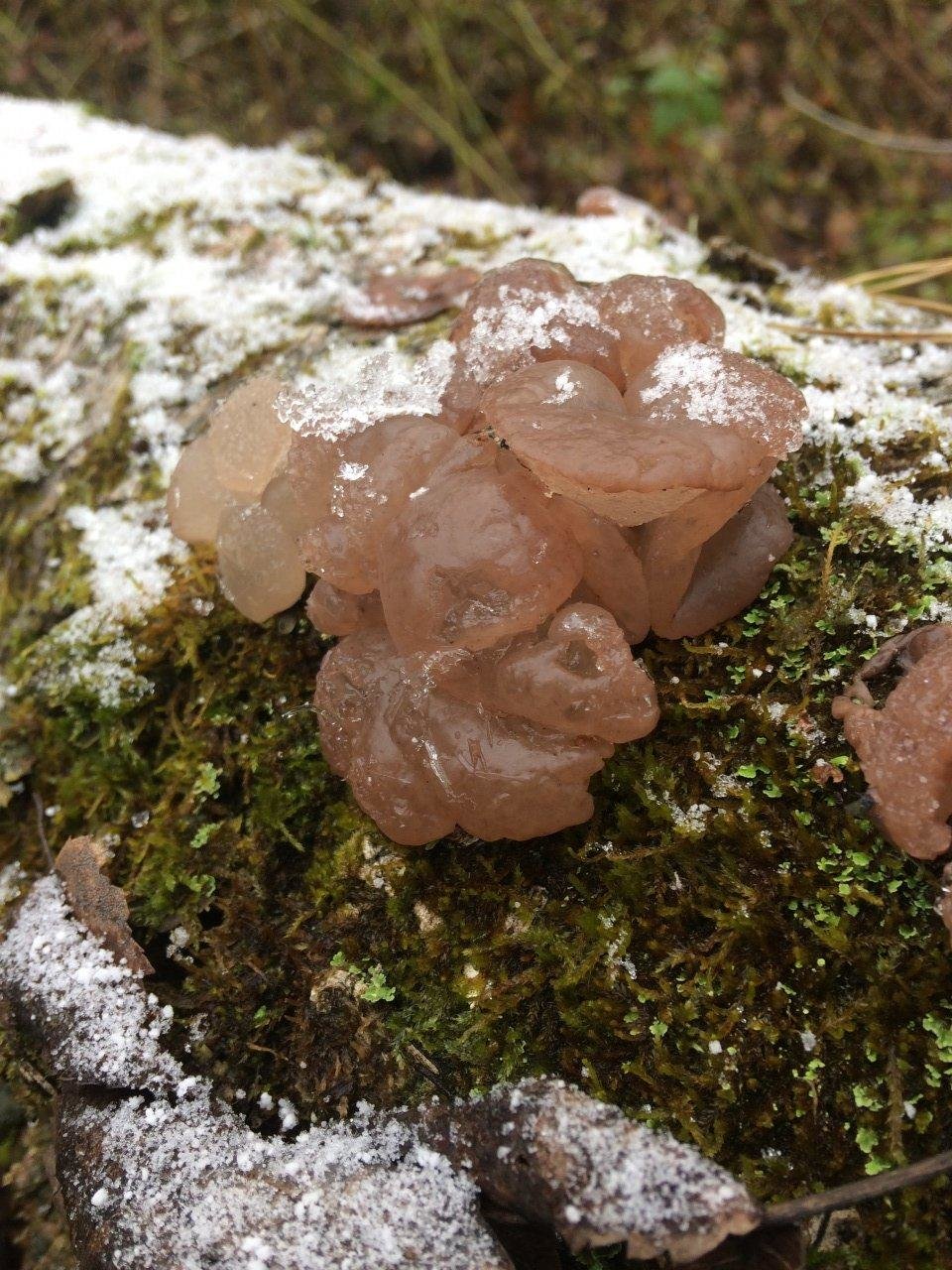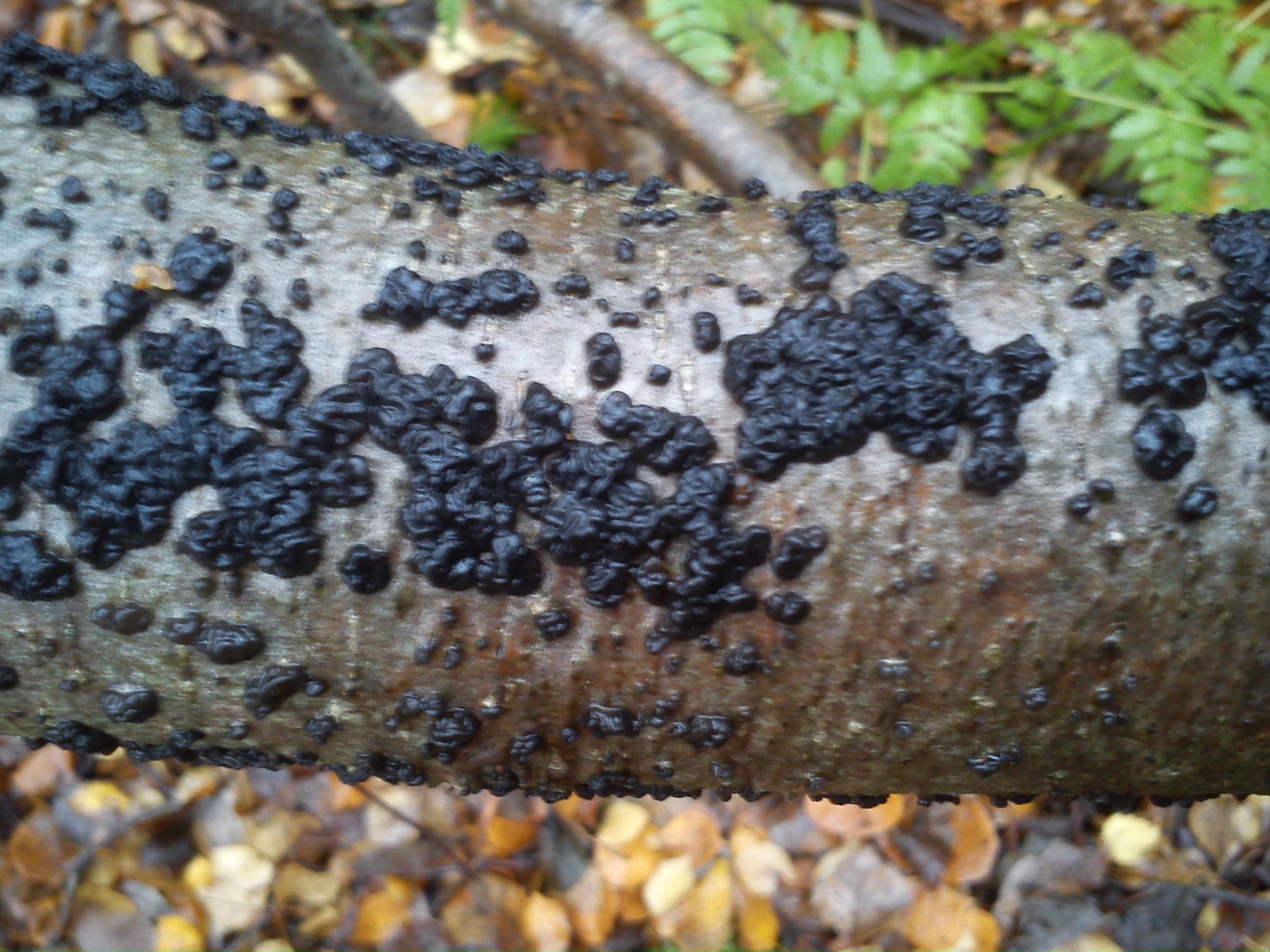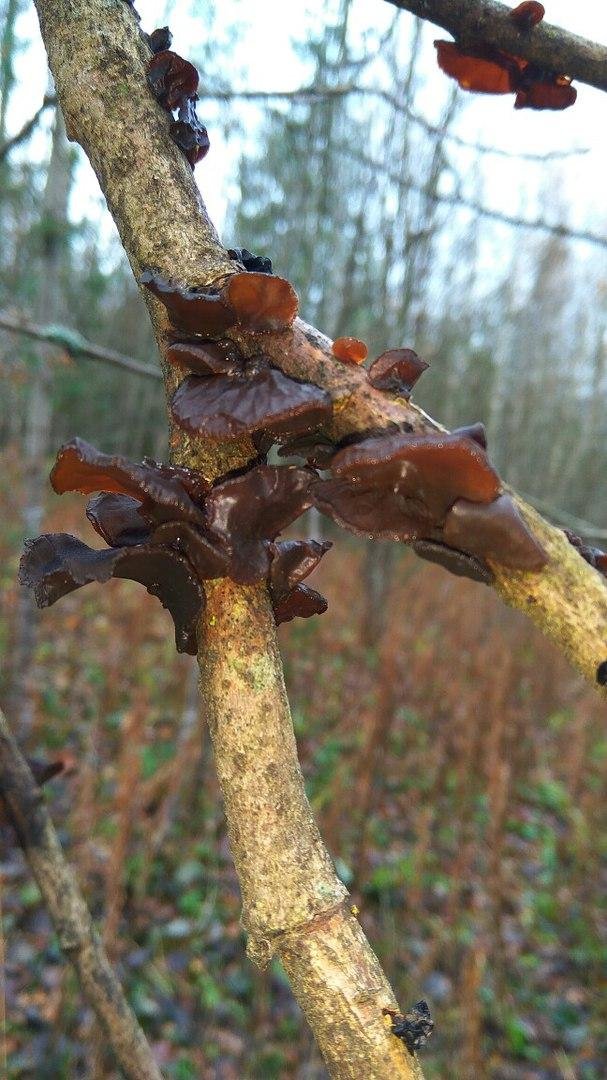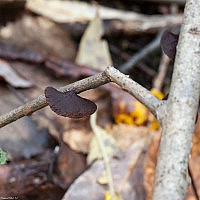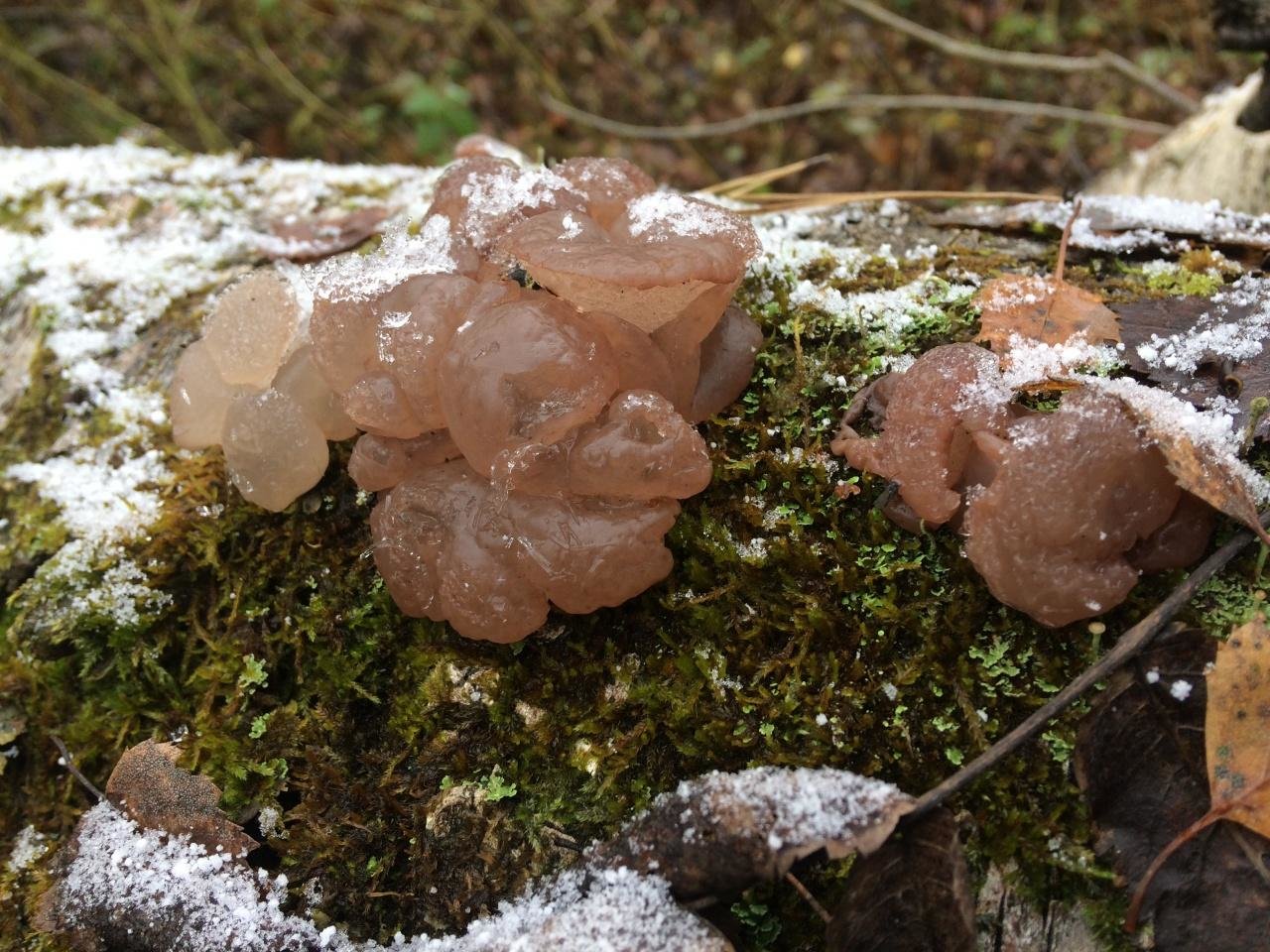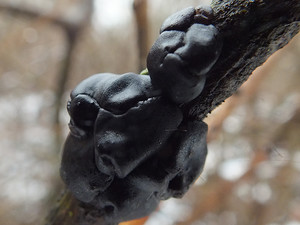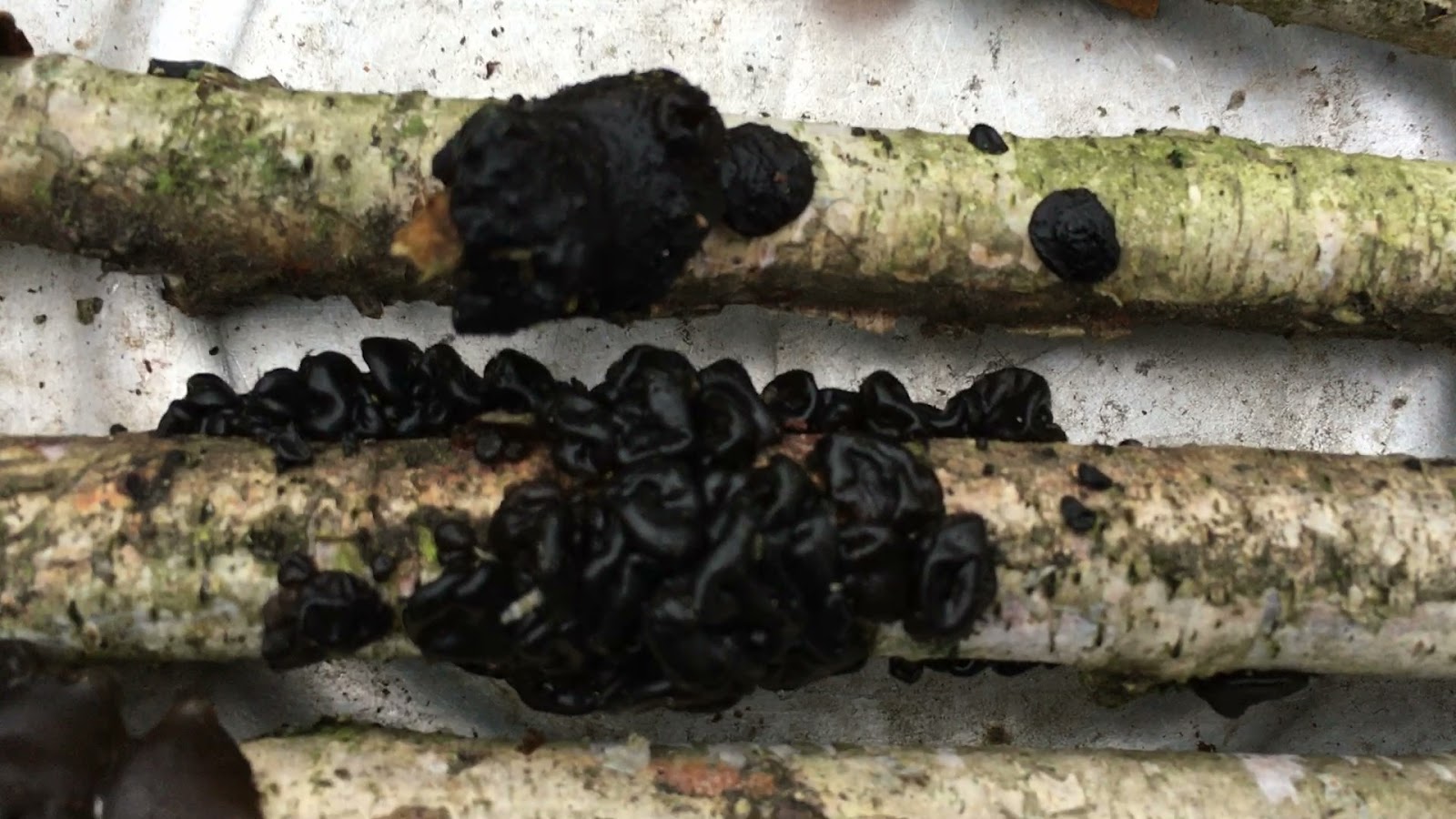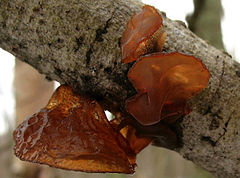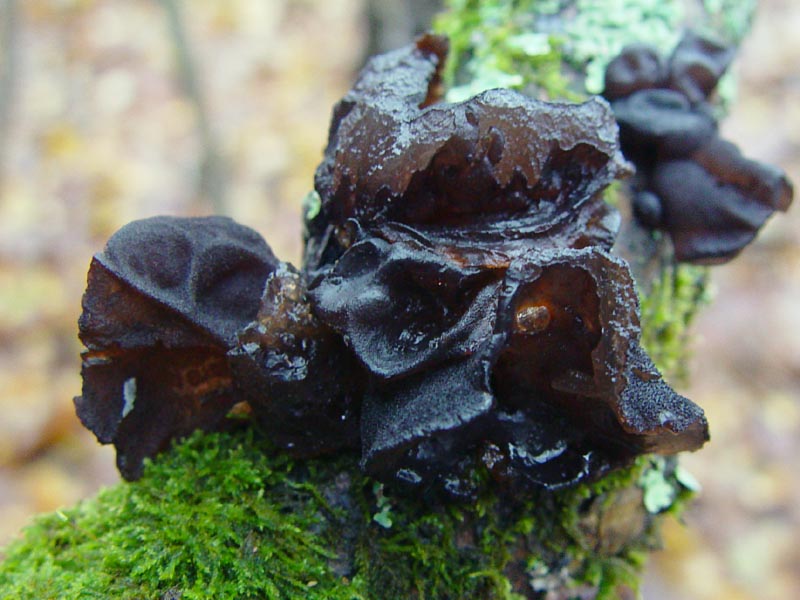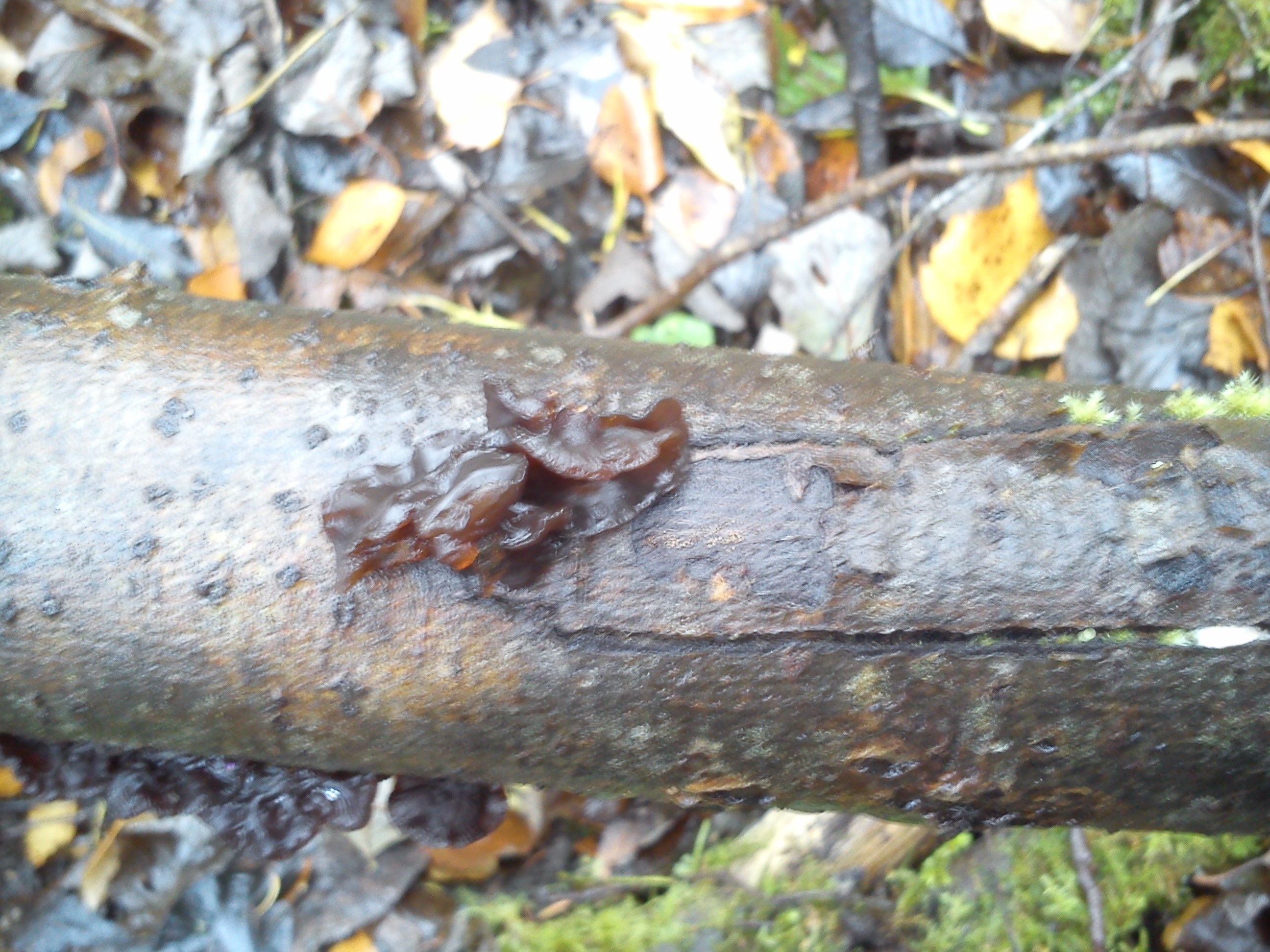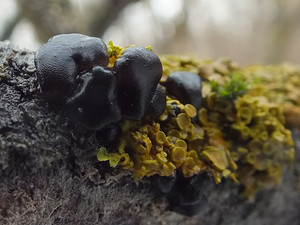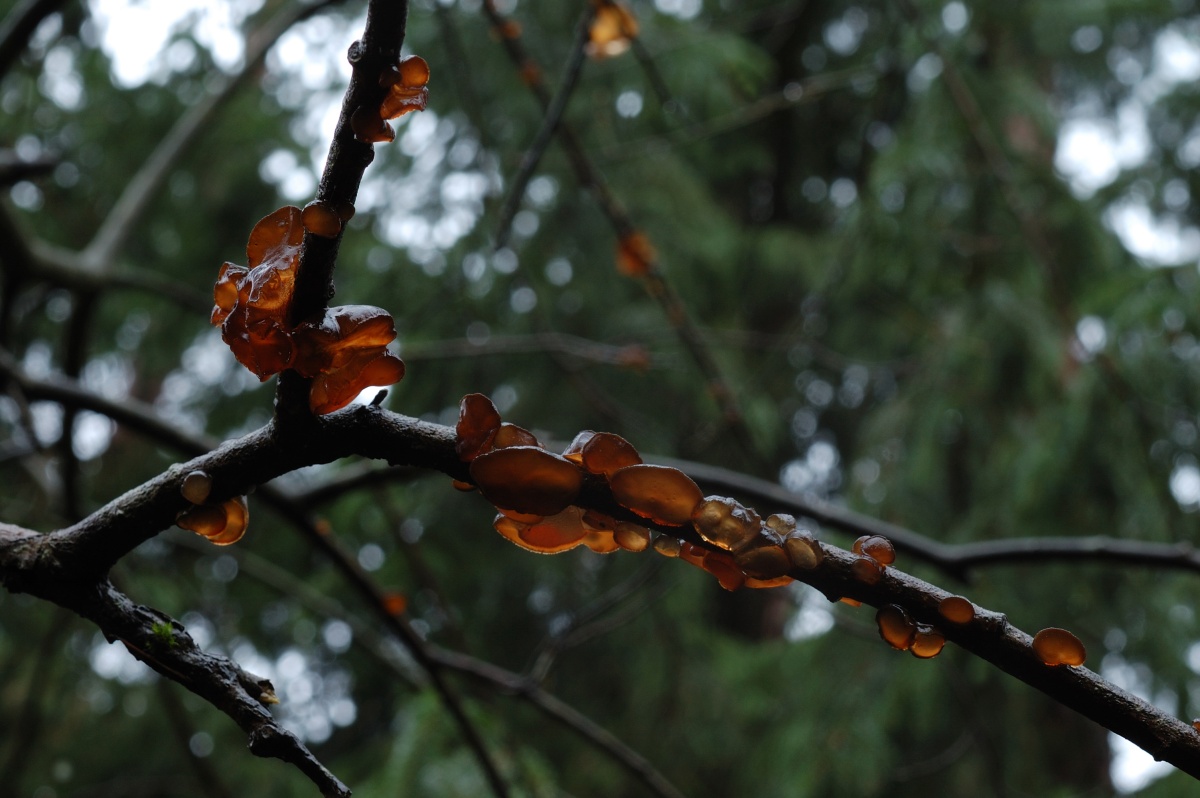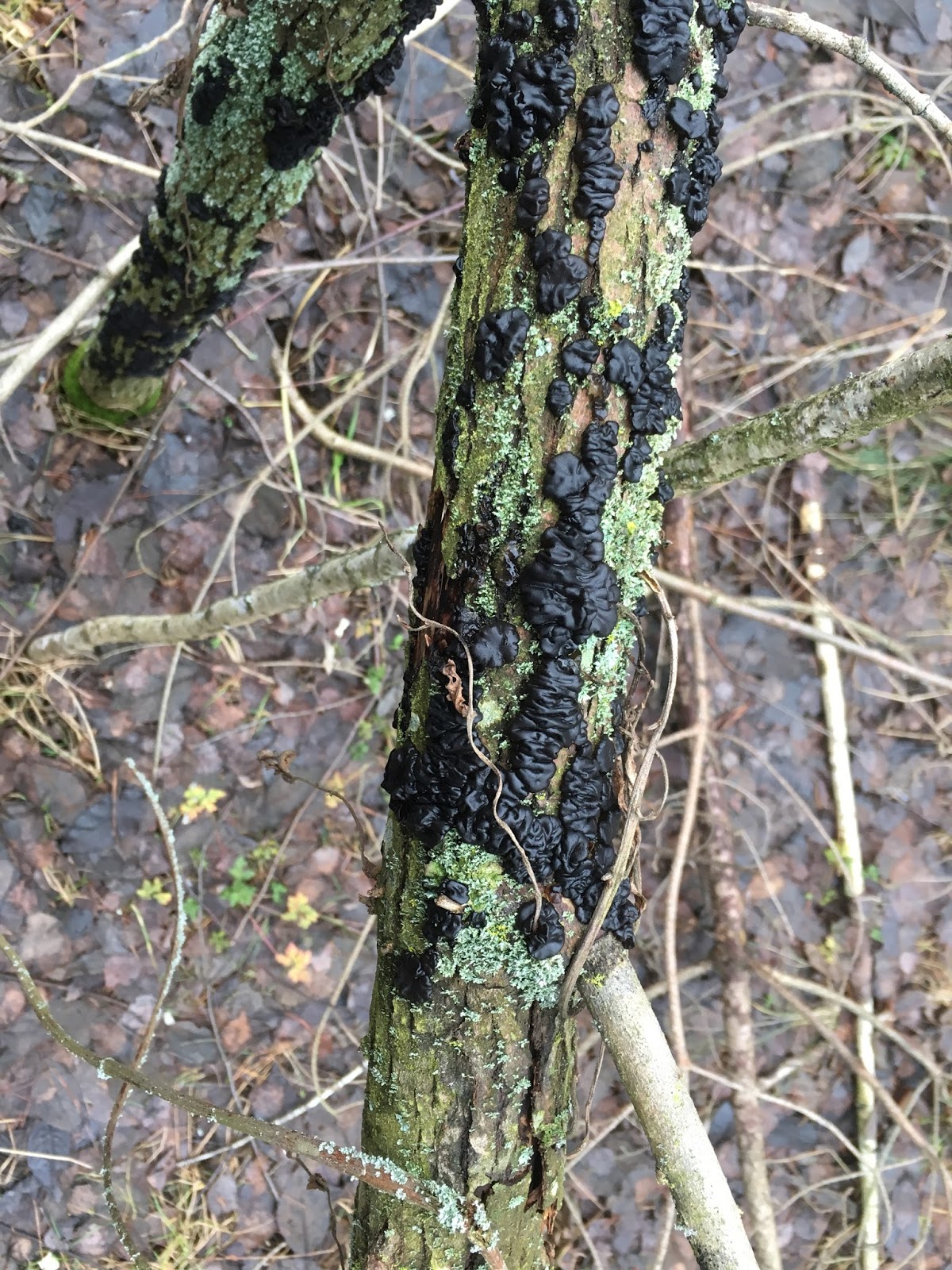September mushrooms of the Camelina edge
On Saturday, we purposefully went for mushrooms to the Yuryansk region. To the place that I mentioned in my last post. We collected a bunch of mushrooms, which we then peeled all evening. Some of this wealth is in the photos below.
Ryzhiki. Actually for them, dear, and went.
Butterlets. Like it or not, but constantly caught my eye. It seems that they are not needed, and more than half of them are wormy, but no, no, yes, a hand will reach out to him, if he is handsome, okay.
While processing the next photo, only at home I noticed that I had missed the mushroom. Here he is, you see, hiding near the trunk, behind a half-dead oil can.
In general, in camelina hunting, the main thing is to find where he is hiding. For the rest of the mushrooms, you just need to walk through the forest and look around, and after the mushrooms you need to look under each spruce paw, crawl on the belly under the branches, lift each blade of grass, almost comb the grass with a comb. It is then that the forest will reward you with a large catch, and after cutting off one mushroom, you will find more than a dozen of them in the grass nearby.
Just a beautiful mushroom with a thin stem, not a commercial Lakovitsa (Laccaria sp.)
Common butter dish (Suillus luteus)
Raincoats grew to considerable sizes. Thorny raincoat (Lycoperdon perlatum)
Common boletus (Leccinum scabrum)
Butterlets and mushrooms in bulk
Goblet goblet (Pseudoclitocybe cyathiformis):
Common boletus (Leccinum scabrum):
Thorny raincoat (Lycoperdon perlatum):
Yes, it's already quite, quite autumn: (alder cones)
Common webcap (Cortinarius trivialis) and tubarium
The hornet was sitting peacefully, maybe sleeping on a branch and calmly allowed himself to be photographed. Common hornet (Vespa crabro) and compressed Exidia (Exidia recisa):
Pink Volnushka (Lactarius torminosus)
Common boletus (Leccinum scabrum)
The stumps overgrown with moss in the forest covered with birch and aspen leaves are very beautiful. Certainly not Shishkin's paintings, but close in spirit.
Yes, honey mushrooms are growing. Not in huge quantities, as sometimes happens when a whole basket can be removed from one stump, but still quite often. Autumn honey fungus (Armillariella mellea)
Common boletus (Leccinum scabrum)
Pink Volnushka (Lactarius torminosus)
Common boletus (Leccinum scabrum)
Some kind of tinder fungus at an early stage of development:
And why do some consider boletus to be the king of mushrooms? In my opinion, the crown should be deservedly given to the mushroom.
Pycnoporus cinnabarinus
Gauls, they are ink nuts. Much more often and of a larger size are found on oak leaves. Usually formed under the influence of insects. Ink nuts are called because in ancient times they were used to make ink. The tannins contained in them, when interacting with ferric salts, gave a persistent color. And the durability and shine were given by the addition of gum (resin of deciduous trees)
taxonomy
This species was originally described from France as Treetop glandulosa by Bulliard in 1789. She was subsequently placed in Exidia from Fries to 1822 Fries, however, modified the Bulliard into a species concept to include a second, outpouring, coalescence of the species name exidium glandular serving for both. This combined concept was used until Neuhoff separated the two species in 1936. Unfortunately, Neuhoff gave the name glandular exsidia to the poured out species, taking on a name Exidia truncata for Bulliard's original species. This error was pointed out by Donk in 1966, who suggested the name Exidia plana for poured out species, now replaced Exidia psapza .
Molecular studies have shown that exidium glandular and E. psapz though similar are different.
The mushroom is commonly known as Black Witch Oil, Black Jelly Roll, or Warty Jelly Mushroom.
Views
- Exidia compressed (Exidia recisa) synonyms: Tremella recisa or Tremella salicus
- Exidia glandulosa synonym: Exidia truncata
- Exidia cartilaginous (Exidia cartilaginea) synonym: Exidia fragilis
- Exidia blackening (Exidia nigricans) synonyms: Exidia plana, Auricularia nigrescens, Auricularia polytricha, Exidia polytricha
- Exidia sugar (Exidia saccharina)
- Exidia thuretiana synonyms: Tremella thuretiana, Tremella albida, Exidia albida, Tremella cerebrina, Tremella hyalina, White Brain
- Exidia willow (Exidia iteinos)
- (Exidia pusilla)
- Fir exidia (Exidia pithya)
- Exidia novozealandica
- Japanese exidia (Exidia japonica) belongs to the family Auriculariaceae, genus Tremellochaete
- (Exidia alveolata)
- (Exidia aeruginosa)
- Exidia or Tremella vesicular, pearly (Exidia nucleata, Myxarium nucleatum) or Criystal Brain belongs to the family Hyaloriaceae, genus Myxarium
- (Exidia alba) synonym Ductifera pululahuana
- (Exidia compacta)
- (Exidia badioumbrina)
- Exidia brownish (Exidia brunneola)
- (Exidia uvapassa)
- Exidia blossoming (Exidia repanda)
- (Exidia villosa)
- (Exidia umbrinella)
- (Exidia zelleri)
- (Exidia vitrea)
- (Exidia tucumanensis)
- (Exidia tomentosa)
- (Exidia testacea)
- (Exidia pergamena)
- (Exidia parvula)
- (Exidia panamensis)
- (Exidia intumescens)
- (Exidia lagunensis)
- (Exidia lutea)
- (Exidia maracensis)
- (Exidia maya)
- Exidia Mexican (Exidia mexicana)
- (Exidia cystidiata)
- (Exidia fulva)
- (Exidia cokeri)
- (Exidia antiguae)
- (Exidia ambipapillata)
- 2009-01-10 Exidia thuretiana 2 cropped.jpg
Exidia prison
- Exidia nigricans, Witches', butter, UK.JPG
Exidia blackening
- Exidia alba 87984.jpg
Exidia alba
- Exidia saccharina 73251 MushroomObserver cropped.jpg
Exidia sugar
- Abgestutzter Drüsling Exidia glandulosa Exidia truncata.jpg
Exidia glandular
- Exidia recisa 34873 cropped.jpg
Exidia compressed
Description
Species of the genus Exidia have jelly-like mushroom bodies of irregular cerebral shape and various colors: from white transparent to black. Fruit bodies grow separately or in clusters when they can fuse. In dry weather, the mushrooms dry out, turning into hard thin crusts that remain viable for up to several years in herbarium conditions. Under natural conditions, this allows fruit bodies to withstand prolonged droughts and come to life again after rain.
In countries with a mild climate, mushrooms of this genus continue to develop continuously from early autumn to spring, so they can be attributed to winter mushrooms. Light frosts down to -10 ° C do not harm them, and during the thaw, at positive temperatures, mushrooms continue to grow and form spores. In the conditions of a more severe winter in the middle zone of the European part of Russia, fungi of some species of the genus Exidia successfully overwinter and begin to develop immediately after the snow melts. Their vital activity continues for several weeks.
Evaluation of the edibility of glandular exidia
There is no information about the edibility of glandular exidia. But, most likely, the mushroom is not poisonous.
Other members of the genus
The brain tremor is an inedible mushroom. The fruit body of this strange mushroom is jelly-like, pink in color. The core is white on the inside, rather dense. The shape of the fruit bodies is irregular, their diameter is 1-3 cm. The surface of the fruit body is small tuberous. The color of the fruit bodies is yellow or white.

Brain tremors are widespread in temperate northern latitudes. You can find these mushrooms only on dead branches of coniferous wood, mainly on pines. Fruiting occurs from summer to autumn.
Orange tremor is a conditionally edible mushroom. The fruit body has the appearance of sinuous lobes. The blades appear to be watery. The height of the fruiting body is 1-4 centimeters. Its color can be almost white, orange or yellow. Its pulp is gelatinous, odorless and tasteless. Fruit bodies, like the rest of the tremors, can dry out, and after rain take their original shape.
Orange tremors bear fruit from August to November. They often persist in the winter as well. They settle on dead dry branches of deciduous wood species. Under favorable conditions, fruiting is very abundant.

Definitioner
Lat. Basidia. A specialized structure of sexual reproduction in fungi, inherent only in Basidiomycetes. Basidia are terminal (end) elements of hyphae of various shapes and sizes, on which spores develop exogenously (outside).
Basidia are diverse in structure and method of attachment to hyphae.
According to the position relative to the axis of the hypha, to which they are attached, three types of basidia are distinguished:
Apical basidia are formed from the terminal cell of the hypha and are located parallel to its axis.
Pleurobasidia are formed from lateral processes and are located perpendicular to the axis of the hypha, which continues to grow and can form new processes with basidia.
Subasidia are formed from a lateral process, turned perpendicular to the axis of the hypha, which, after the formation of one basidium, stops its growth.
Based on morphology:
Holobasidia - unicellular basidia, not divided by septa (see Fig. A, D.).
Phragmobasidia are divided by transverse or vertical septa, usually into four cells (see Fig. B, C).
By type of development:
Heterobasidia consists of two parts - hypobasidia and epibasidia developing from it, with or without partitions (see Fig. C, B) (see Fig. D).
Homobasidia is not divided into hypo- and epibasidia and in all cases is considered holobasidia (Fig. A).
Basidia is the place of karyogamy, meiosis and the formation of basidiospores. Homobasidia, as a rule, is not functionally divided, and meiosis follows karyogamy in it. However, basidia can be divided into probasidia - the site of karyogamy and metabasidia - the site of meiosis. Probasidium is often a dormant spore, for example in rust fungi. In such cases, probazidia grows with metabasidia, in which meiosis occurs and on which basidiospores are formed (see Fig. E).
See Karyogamy, Meiosis, Gifa.
Allantoid (Allantoid Spore)
Sausage-shaped, slightly curved, cylindrical spore with rounded ends.
Exidia compressed (Exidia recisa)
Current title
| Index Fungorum | Exidia recisa (Ditmar) Fr. | |
| MycoBank | Exidia recisa (Ditmar) Fries |
Systematic position
Etymology of the species epithet
Recīsus, a, um severed, cut off, cut off, etc. Part. perf. pass. to recīdo, cīdī, cīsum, ere 1) cut off, cut off, cut off; 2) exterminate, cut; 3) cross out; eliminate, remove; 4) iron out; 5) cut, cut; moderate, limit.
Synonyms
Tremella recisa Ditmar, in Sturm, Deutschl. Fl., 3 Abt. (Pilze Deutschl.) 1 (1): 27 (1813)
Habit
Fruit body: Gelatinous, gelatinous
Hymenophore: Smooth, not pronounced
Fruiting body
Fruit bodies are round, erect, compact, leaf-shaped, disc-shaped or in the form of an inverted cone, with a short, barely noticeable stem, 1 - 3 cm in height, adherent to the substrate with a narrowed base (or stem), single or clustered, yellowish, amber, brown or with a reddish tint. The surface is smooth or sometimes slightly wrinkled, shiny. The edge of the fruiting bodies is wavy-wrinkled. The consistency of the fruiting bodies is soft gelatinous. When dry, the fruit bodies become horny, shiny, dark brown to black.
Microscopy
Spores 12 - 14 × 3 - 4 μm, allantoid, hyaline, thin-walled, with a pronounced apex.
Basidia 10 - 13 × 7 - 10 μm, almost spherical, ovate or ellipsoid, 4-spore, with a buckle at the base and long cylindrical sterigmas.
The hyphae of the tissue are branched, thin-walled, hyaline, with buckles.
Ecology and distribution
Substance: Woody plants (living trees, bark and dead wood)
Grows on decaying deciduous wood, preferring willow (Salix), usually along the banks of rivers and lakes.
Fruiting
The divisions correspond to the decades of the month.
Nutritional properties
Similar species
- Exidia brownish (Exidia brunneola) - mainly grows on poplar (Populus); spores over 15 µm in length.
- Exidia (Exidia repanda) - mainly grows on birch (Betula), forms dense aggregates.
Related materials
- Malysheva V.F. Genus Exidia (Auriculariales, Basidiomycota) in Russia. // Mycology and phytopathology. - 2012.T. 46 (6). - S. 365–376.
- Breitenbach J, Kränzlin F. Fungi of Switzerland. A contribution to the knowledge of the fungal flora of Switzerland. Vol 2. Heterobasidiomycetes, Aphyllophorales, Gasteromycetes. - Lucerne: Verlag Mykologia, 1986 .-- 412 p. - P. 64.
- Roberts P. A Key to British Exidia species. // Field Mycology. - 2001. - V. 2 (4). - P. 134-135.
Link to this page for prints
Ageev D.V., Bulonkova T.M.Exidia recisa - Mushrooms of Siberia URL: https://mycology.su/exidia-recisa.html (date of access: 28.02.2020).
Share link
Discussions
| Identifier: | 8343 |
| Responsible: | Dmitry Ageev |
| Date of creation: | 2015-05-23T02: 11: 16 |
| Last modified date: | 2018-11-15T05: 33: 10 (Dmitry Ageev) |
OOO OOO OOO OOO OOO OOO OOO OOO OOO OOO OOO OOO OOO OOO OOO OOO OOO OOO OOO OOO OOO OOO OOO OOO OOO OOO OOO OOO OOO OOO OOO OOO OOO OOO OOO OOO OOO OOO OOO OOO OOO OOO OOO OOO OOO OOO OOO OOO OOO OOO OOO OOO OOO OOO OOO OOO OOO OOO OOO OOO OOO OOO OOO OOO OOO OOO OOO OOO OOO OOO OOO OOO OOO OOO OOO OOO OOO OOO OOO OOO OOO OOO OOO OOO OOO OOO OOO OOO OOO OOO OOO OOO OOO OOO OOO OOO OOO OOO OOO OOO OOO OOO OOO OOO OOO OOO OOO OOO OOO OOO OOO OOO OOO OOO OOO OOO OOO OOO OOOì
Age restrictions
Federal Law of the Russian Federation of December 29, 2010 No. 436-FZ "On the Protection of Children from Information Harmful to Their Health and Development."
APK "Vitus" - News
Birch dropsy (Erwinia multivora.)
In recent years, active foci of a poorly studied disease - bacterial dropsy of birch (Erwinia multivora Scz.-Parf.), Have been identified in the territory of the Russian Federation.
Cytosporosis of birch (Cytospora horr> Posted on 21.01.2020 by the author of APK
The causative agent is the mushroom Cytospora horrida Sacc.(marsupial stage - Valsa horrida Nits.), causes necrosis of the bark, drying out of individual branches and whole trees.
Exidia sugar (Ex> Published on 21.01.2020 by the author of APK
Head of the plant protection laboratory of AIC "Vitus" Sinelnikov K. Yu.
Specialists of the plant protection department of AIC "Vitus" carry out entomological and phytopathological examination of green spaces, develop individual plans for plant protection measures, treat green spaces with protective agents and carry out complex plant care.
Plant Protection Department of Agroindustrial Complex "Vitus"
8
Comparison of 3 types of exsidia: glandular exsidia, truncated exsidia and compressed exsidia
Head of the plant protection laboratory of AIC "Vitus" Sinelnikov K. Yu.
Specialists of the plant protection department of AIC "Vitus" carry out entomological and phytopathological examination of green spaces, develop individual plans for plant protection measures, treat green spaces with protective agents and carry out complex plant care.
Plant Protection Department of Agroindustrial Complex "Vitus"
8
Truncated exidia (Ex> Published on 21.01.2020 by the author of APK
Head of the plant protection laboratory of the agro-industrial complex "Vitus" Sinelnikov K. Yu.
Specialists of the plant protection department of AIC "Vitus" carry out entomological and phytopathological examination of green spaces, develop individual plans for plant protection measures, treat green spaces with protective agents and carry out complex plant care.
Plant Protection Department of Agroindustrial Complex "Vitus"
8
Exidia glandular (Ex> Published on 21.01.2020 by the author of APK
The causative agent is the mushroom Exidia glandulosa
Division: Basidiomycota (Basidiomycetes) Subdivision: Agaricomycotina (Agaricomycetes) Class: Agaricomycetes (Agaricomycetes) Subclass: Auriculariomycetidae Order: Auriculariales (Auriculariaceae) Family: Exidiae: Exidiaceae (Rhodes)
It is located on trunks with thin bark and large tree branches.
Photo: Mina acacia tail-bearing moth
Alder lurker - Cryptorrhynch> Posted on 16.12.2019 by the author of APK
a - an adult; b - an adult from the side; c - damage to the trunk with a larva; d - signs of damage to young alder; e - signs of a previous lesion on alder.
Dark-colored weevil, 6-9 mm long. The body is covered with dark brown, almost black scales with very short bristles. The shield is covered with white scales on the sides. The prothorax has a deep groove between the thighs, in which the rostrum is located. The larva is white with a brown head, legless, 10-12 mm long.
Willow diplodine necrosis (Diplodina microsperma)
Diplodine necrosis of willow trunks and branches (causative agent - fungus Diplodina microsperma).
Photo: Sinelnikova K.Yu.
Synonyms: - Plagiostoma salicellum; - Septomyxa picea; - Cpyptodiaporthe salicella;
Diplodine necrosis of willow trunks and branches (causative agent - the fungus Diplodina microsperma) is a widespread and dangerous, but poorly understood disease. Continue reading →
Exidia compressed: photo and description
| Name: | Exidia compressed |
| Latin name: | Exidia recisa |
| Type of: | Inedible |
| Synonyms: | Tremella recisa, Tremella salicus |
| Specifications: |
|
| Systematics: |
|
Compressed exidia is a poorly studied mushroom, which, perhaps, only avid mushroom pickers know about. What are these gifts of the forest, you should find out before the start of the "quiet hunt".
What does Exidia look like
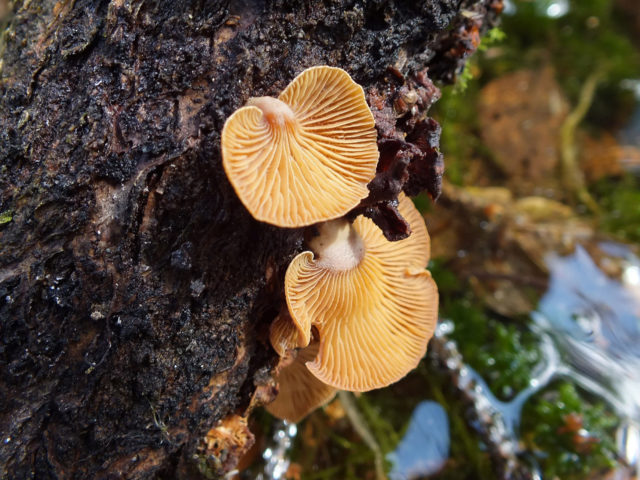
The mushroom resembles a closed shell with a barely noticeable stem 2-3 cm long. The fruit body is erect, rounded, leaf-shaped, compact, disc-shaped, or in the form of an inverted cone. As a rule, the surface of a young exidium is compressed smooth, but over time it becomes folded and wrinkled.
Color - from yellow and amber shades to red-brown, and when dry, the pulp begins to turn black.The edge of the fruiting body is wavy-wrinkled. It is characterized by an expressionless taste and smell.
Basidia are tetrasporous with a buckle at the base and long cylindrical sterigmas, reaching sizes of 10-13 × 7-10 microns. Spores 12-14 × 3-4 μm, thin-walled, hyaline, allantoid with a pronounced apex.
Is the mushroom edible or not
Mushrooms of this genus have several varieties, some of which are edible. However, this specimen belongs to the group of inedibles, but is not considered poisonous.
Where and how it grows
You can meet this species on dead deciduous wood that grows along rivers and lakes.
The variety is widespread throughout Russia, and the favorable time for their growth is from July to September. However, in some parts of the country with a mild climate, this specimen continues to grow continuously.
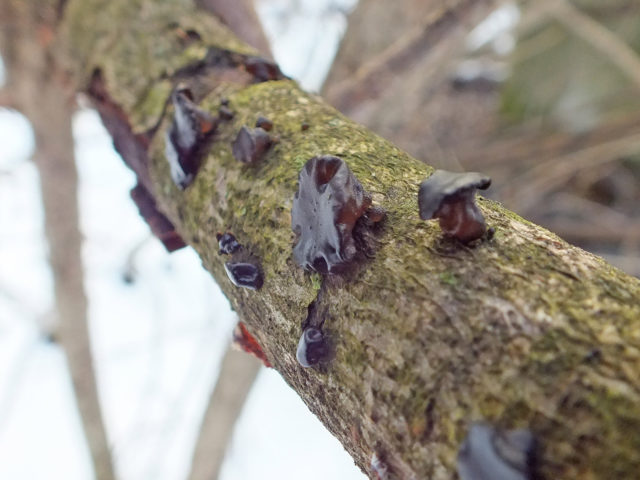
For example, in the southern region of Russia, where frosts reach a maximum of -10 degrees in winter, fungi do not die. And at above-zero temperatures, they continue to develop and form spores. In those regions where winters are more severe, for example, in the European part, exsidia winters successfully and begins to grow immediately after the thaw.
In dry weather, the fruit bodies dry out, acquiring a black tint, turning into hard thin crusts, the viability of which is several years in herbarium conditions. However, with heavy rain, the mushrooms return to their original form.
Doubles and their differences
There are several types of mushrooms that are considered twins of the Compressed Exidia:
- Exidium glandular - resembles compressed in shape and color. Nevertheless, the glandular has a more saturated black color, and small warts can be seen on the surface of the fruiting body. This doppelgänger is believed to be an edible and delicious mushroom.
- Truncated exidia - similar in color and shape. You can distinguish a double from a real one by the presence of a lower velvety surface and small warts on its fruiting body. They are classified as inedible.
- Exidia blossoming - has a similar color and rounded flattened fruiting bodies. However, it will not be so difficult to distinguish a twin from a compressed exsidium, since most often it grows on a birch. This variety is never found on willow. It is an inedible species.
- Leafy shiver - similar in shape and color to fruit bodies, but this species is quite rare and grows on stumps. Experts classify it as inedible and do not recommend using it for food.
Description
Exidia of glandular Shaped dark sepia to blackish, rubbery-gelatinous fruiting bodies that are top-shaped (such as an inverted cone) and about 3 cm (1.2 in) in diameter. They are firm when fresh, but become weak and distorted with age or in damp weather. Fruiting bodies are found singly or in small groups. The upper, spore-bearing support surface is shiny and dotted with small pimples or pins. The underside is smooth and matte at first, but also develops a dense coating of small gelatinous spines. The fruiting bodies are attached to the tree at the base. Dispute print white. When the fruit bodies are dry, they can shrink to form a flattened black rind.
Microscopic symbols
Microscopic symbols are characteristic of the genus Exidia ... Basidia have ellipsoidal septa, 15-25 from 8-13 microns. These spores are allantoid (Sausage), 14-19 microns in size, 4.5-5.5 microns.
Similar species
Exidia psapzBulgaria inquinans
Exidia glandular often confused with Exidia psapz ... The two are similar but E. psapz produces button-shaped fruiting bodies in clusters that quickly become deformed and coalesce to form an oozing, lobed mass that can be 10 cm (3.9 in) or more in diameter. The two species are microscopically indistinguishable, but DNA testing indicates they are different. Closely connected E. recisa has more erect fruiting bodies without warts on the surface, lighter colors (ranging from yellowish brown to dark brown), and a small base.
In the ascomycete Bulgaria inquinans shape, similar to rubbery-gelatinous, blackish fruiting bodies on oak. Their upper surfaces are completely smooth, however, and they produce abundant black (non-white) spore marks, often leaving a black discoloration when rubbed with hands.
Description of glandular exidia
The fruit body of this fungus is trembling. The color of the fruiting body can be dark brown or black. The shape of the fruit body is teardrop-fold, lenticular. The diameter of the fruiting body is small - 1-2 centimeters. Fruiting bodies grow together in a disorderly manner, as a result, a conglomerate of irregular shape is formed.

In wet weather, the fruit body is gelatinous, but in drought it can shrink. And after the rain, the mushroom returns to its previous state. The pulp is translucent, it has no special taste or smell. Spore white powder.
Distribution of glandular exidia
These fungi settle on dead deciduous trees. You can often find a tree entirely covered with ferruginous exsidia. Fruiting bodies give preference to thin branches, perhaps this is due to the peculiarities of the bark.
Ferruginous exsidia appear, as a rule, in late autumn; they are also found in spring - until May. They can hibernate under the snow or grow back. However, these mushrooms come across in the summer. Exidia glandular is not at all a rare species, but there is not too much information about it, since it is little noticeable.

The similarity of exidia glandular with other mushrooms
First of all, this mushroom can be confused with other representatives of the Exidia genus. For example, it has an external resemblance to the truncated exsidia, with which it often settles on the same trees. But the fruiting bodies of truncated exsidia do not form intergrowths.

